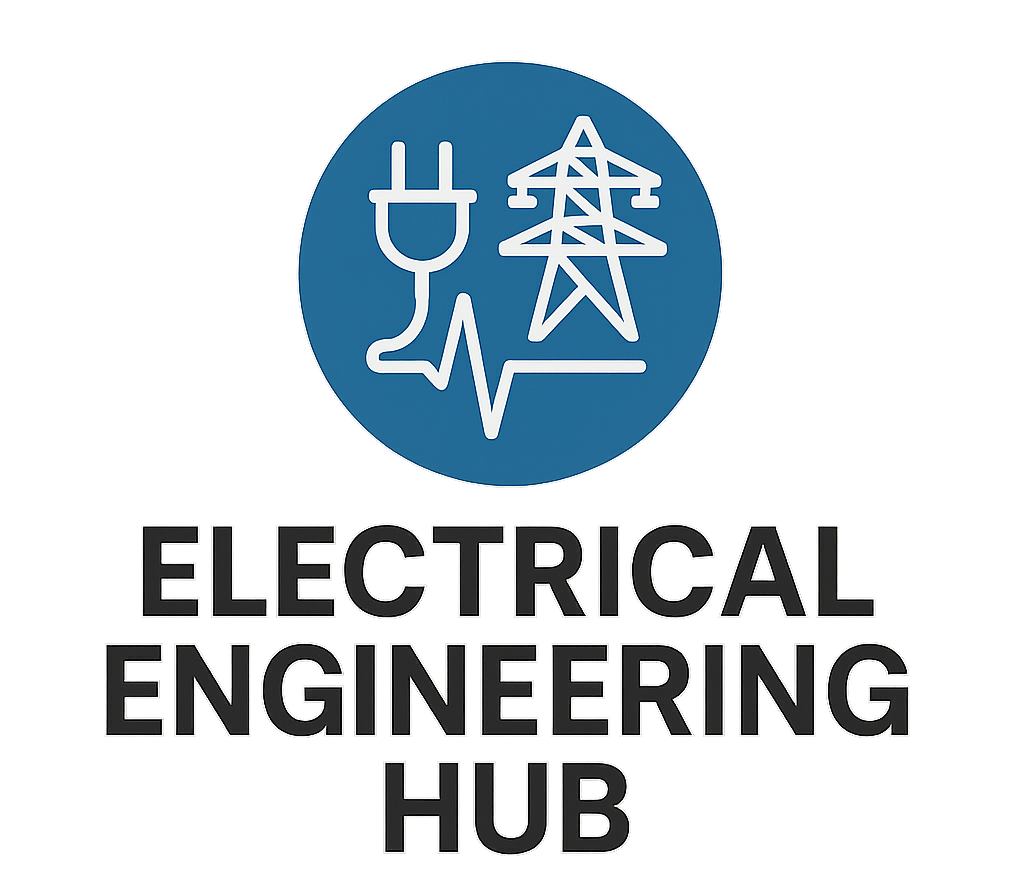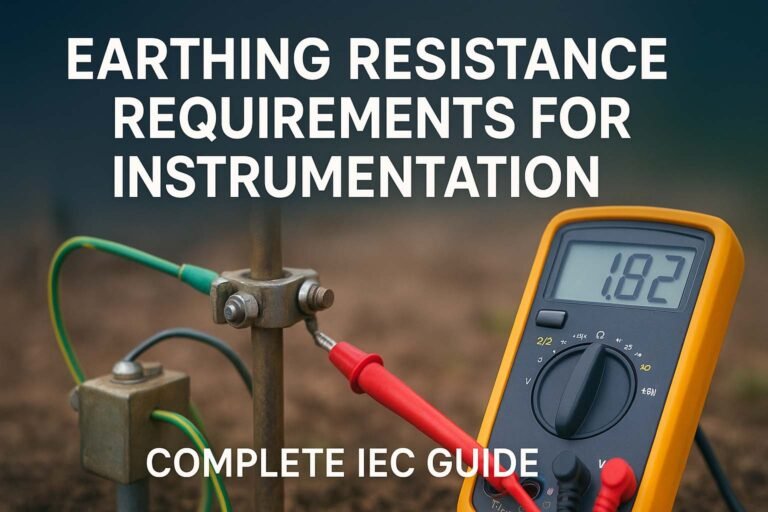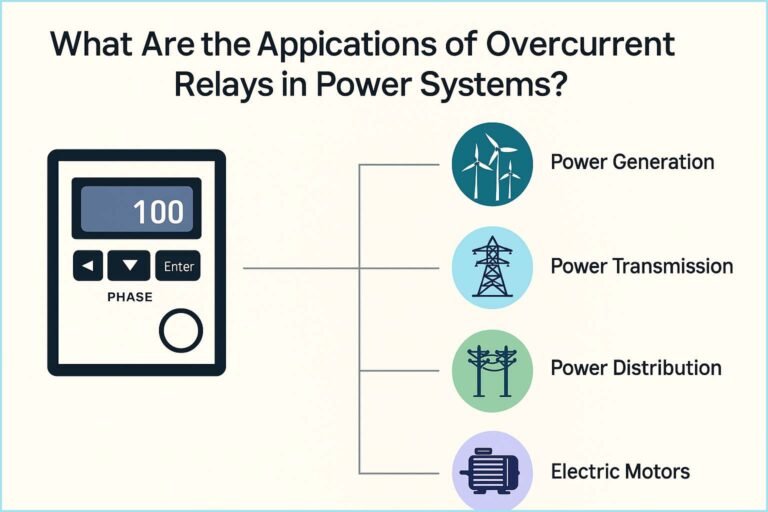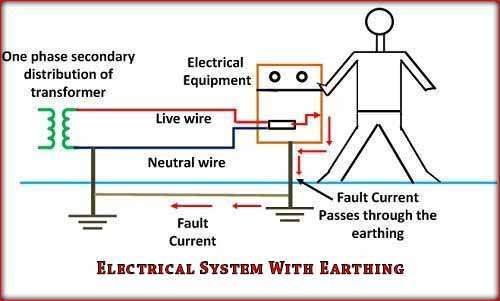IEC 60364 Earthing Requirements Explained: Step by Step
Earthing is one of the most critical aspects of electrical installation safety. Without proper grounding, electrical systems can become hazardous for people, equipment, and the overall reliability of power distribution. The International Electrotechnical Commission (IEC) has developed standards that guide engineers, installers, and safety officers in designing safe and reliable earthing systems. Among these, IEC 60364 Earthing Requirements are the most widely adopted worldwide.
Table of Contents
Table of Contents
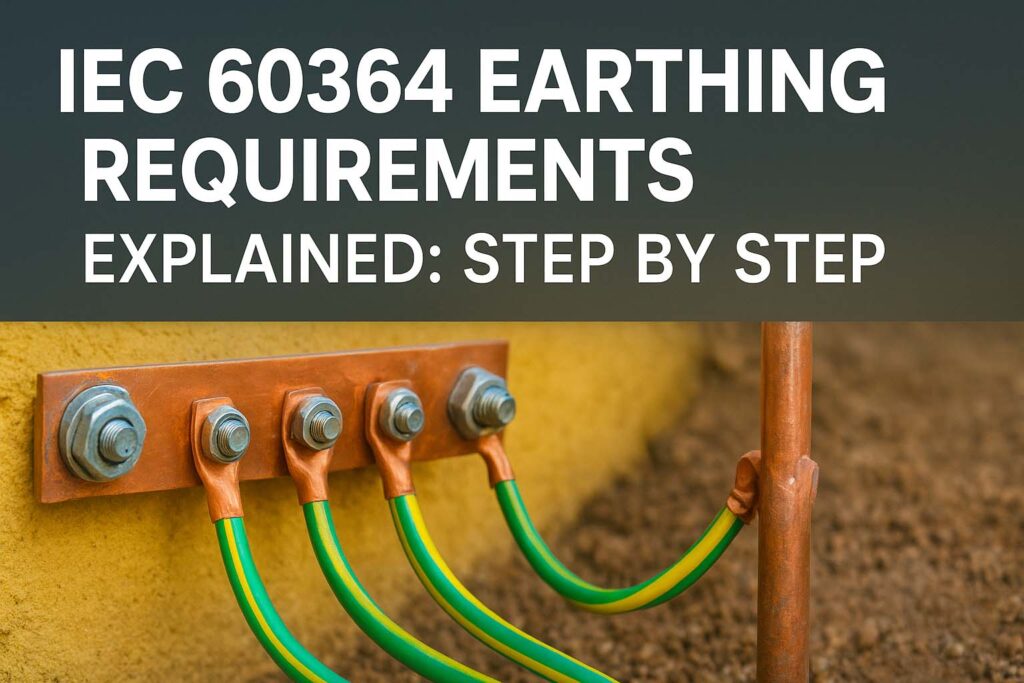
IEC 60364 is a global benchmark for electrical installations in buildings. It specifies how earthing should be designed, tested, and maintained. The main purpose is to protect human life, safeguard equipment, and ensure that installations operate safely under normal and fault conditions. Earthing ensures that dangerous voltages do not appear on exposed conductive parts of equipment, and that fault currents have a low-resistance path back to the source.
Understanding IEC 60364 Earthing Requirements is not only important for compliance but also for building trust in the safety and performance of electrical installations. Industrial facilities, residential buildings, commercial complexes, and even renewable energy systems like solar power plants depend on these guidelines to avoid electrical hazards such as shocks, fires, and equipment failures.
Know more about IEC Standard for DC Cable Sizing – Complete Technical Guide
Key Takeaways
- IEC 60364 Earthing Requirements define how electrical systems must be earthed to ensure safety and reliability.
- The standard covers different earthing arrangements, including TN, TT, and IT systems.
- Proper earthing reduces the risk of electric shock, prevents equipment damage, and ensures compliance with global safety practices.
- Engineers must understand fault current paths, protective devices, and soil resistivity to apply IEC 60364 effectively.
Know more about Equipotential Bonding for Control Panels
Importance of IEC 60364 Earthing Requirements
The IEC 60364 standard has become a cornerstone in modern electrical engineering. Its earthing requirements ensure that any fault, such as insulation failure or accidental contact with live parts, is managed safely. Earthing provides a defined path for current to return to the source, preventing high voltages from appearing on metallic enclosures.
One of the most important functions is the protection of people from electric shock. If exposed conductive parts become energized due to a fault, the earthing system ensures quick disconnection by tripping protective devices like fuses or circuit breakers. Without compliance with IEC 60364 Earthing Requirements, even minor faults could escalate into life-threatening situations.
In addition to personal safety, earthing also protects equipment. Transient overvoltages, lightning strikes, or switching surges can damage sensitive electronics. A properly designed earthing network dissipates these excess energies into the ground, minimizing operational risks.
Scope of IEC 60364 Earthing Requirements
The scope of IEC 60364 is broad. It covers low-voltage electrical installations in residential, commercial, and industrial applications. The standard outlines:
- Methods for connecting exposed conductive parts to earth.
- Types of earthing arrangements suitable for different supply systems.
- Guidelines for fault protection and protective conductor sizing.
- Coordination with protective devices to ensure disconnection times.
- Consideration of environmental factors such as soil resistivity and corrosion.
Unlike local codes, which may focus only on specific regions, IEC 60364 is globally harmonized. Many countries either adopt it directly or use it as the foundation for their national standards.
Know more about Ground Loop Prevention in Instrumentation Systems
Types of Earthing Arrangements in IEC 60364
IEC 60364 classifies earthing systems based on the relationship between the power supply and the exposed conductive parts. The three main types are TN, TT, and IT.
TN System
In TN systems, the neutral of the supply is directly earthed, and exposed conductive parts of the installation are connected to this point. The TN system is further divided into:
- TN-S: Separate neutral (N) and protective earth (PE) conductors throughout the system.
- TN-C: Neutral and protective earth are combined in a single conductor (PEN).
- TN-C-S: A combination where neutral and earth are combined in part of the system, then separated downstream.
Know more about Earth Ground Testing: Clamp Meter vs Fall-of-Potential Method
TN systems are widely used in urban power distribution because they offer low impedance fault paths and reliable protection.
TT System
In TT systems, the supply has its own earth connection, and the consumer installation uses a separate earth electrode. There is no direct metallic connection between supply earth and consumer earth. This arrangement is common in rural areas or isolated installations. The main challenge is achieving a low earth resistance to ensure proper fault clearance.
IT System
In IT systems, the supply has no direct connection to earth or is connected through a high impedance. Exposed conductive parts are earthed individually or collectively. IT systems are preferred in locations where continuity of supply is critical, such as hospitals or industrial plants. Since the first fault does not cause immediate disconnection, monitoring devices are essential to detect insulation failures.
Know more about Shield Grounding & Cable Screening
| Earthing Arrangement | Supply Neutral Connection | Consumer Earth | Typical Applications |
|---|---|---|---|
| TN-S | Neutral directly earthed, separate PE | Connected to supply earth | Urban networks, commercial buildings |
| TN-C | Neutral and PE combined (PEN) | Connected to supply earth | Old networks, cost-saving designs |
| TN-C-S | PEN upstream, PE and N separated downstream | Connected to supply earth | Modern utility supplies |
| TT | Neutral earthed, consumer has own electrode | Separate earth electrode | Rural, standalone houses |
| IT | Neutral unearthed or high impedance earthed | Equipment individually earthed | Hospitals, industries |
Protective Measures in IEC 60364 Earthing Requirements
IEC 60364 does not consider earthing in isolation. Protection depends on a combination of earthing and protective devices. The standard emphasizes coordination between earthing, overcurrent devices, and residual current devices (RCDs).
- Fault Protection: Ensures disconnection of supply in case of a fault. For TN systems, low fault loop impedance ensures quick tripping. For TT systems, RCDs are essential because earth resistance may be too high.
- Basic Protection: Prevents contact with live parts through insulation, barriers, and enclosures.
- Automatic Disconnection of Supply (ADS): Key requirement of IEC 60364. It mandates that in the event of a fault, supply must be automatically disconnected within a specified time depending on system voltage.
Know more about Functional vs Protective Earthing
For example, in TN systems up to 230 V, disconnection must occur within 0.4 seconds.
| System Type | Maximum Disconnection Time at 230 V |
|---|---|
| TN | 0.4 s |
| TT | 0.2 – 1 s (depending on device rating) |
| IT | First fault monitored, disconnection on second fault |
Factors Affecting Earthing Design
While IEC 60364 Earthing Requirements provide general rules, practical implementation depends on several factors:
Soil Resistivity: High resistivity soils like rocky or sandy terrain make it difficult to achieve low earth resistance. Engineers often use multiple electrodes or chemical earthing to reduce resistance.
Know more about Grounding vs Bonding: Key Differences Explained
Electrode Material and Size: Copper, galvanized steel, and stainless steel are common choices. IEC 60364 specifies minimum cross-sectional areas for protective conductors and earth electrodes.
Fault Current Levels: The design must handle the magnitude and duration of expected fault currents.
Environmental Conditions: Corrosion, moisture, and temperature changes affect earthing system reliability.
Coordination with Protection Devices: The earthing system must ensure that fault currents activate breakers or RCDs within required times.
Testing and Verification under IEC 60364
IEC 60364 requires verification of earthing systems before commissioning. Testing ensures compliance and long-term safety. The main tests include:
- Earth Resistance Measurement: Using fall-of-potential or clamp methods to confirm electrode resistance.
- Continuity Test: Verifying that protective conductors are continuous and properly connected.
- Fault Loop Impedance Test: Ensuring that the impedance of the fault loop is low enough to trip protective devices.
- RCD Testing: Checking sensitivity and tripping times of residual current devices.
Routine inspections are also recommended to identify degradation, corrosion, or loose connections.
Know more about IEC Standards for Instrument Earthing
Advantages of Complying with IEC 60364 Earthing Requirements
Compliance with IEC 60364 provides multiple benefits:
- Enhanced safety for people and property.
- Compliance with international standards simplifies project approvals and reduces liability.
- Improved system reliability by minimizing equipment failures due to surges or faults.
- Easier integration of renewable energy systems, which require robust earthing for inverters and protective devices.
- Global recognition makes designs more future-proof as industries move toward harmonized electrical safety standards.
Know more about Star Delta Transformer Fault Current Distribution Explained
Conclusion
The IEC 60364 Earthing Requirements are not just technical rules; they are life-saving measures. By defining how electrical installations should be earthed, the standard reduces risks of shock, fire, and equipment failure. Engineers, contractors, and facility managers must understand and apply these requirements carefully.
Whether working with TN, TT, or IT systems, the principle remains the same: provide a safe, low-resistance path for fault currents and ensure protective devices operate correctly. Testing, verification, and maintenance are equally important to ensure long-term compliance.
Know more about Transformer Protection Schemes: Types and Application Guide
Follow Us on Social:
Subscribe our Newsletter on Electrical Insights for latest updates from Electrical Engineering Hub
#IEC60364, #EarthingRequirements, #ElectricalSafety, #IECStandards, #GroundingSystem, #EarthingProtection, #ElectricalEngineering, #PowerSafety, #EarthingDesign, #IndustrialEarthing, #IECCompliance, #ElectricalStandards, #SafeGrounding, #EarthingExplained, #ElectricalProtection
